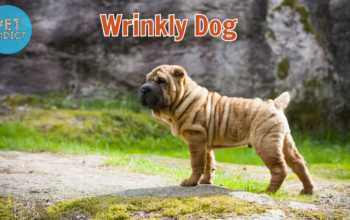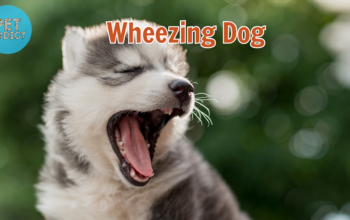Introduction
When the rain starts pouring, it’s important to remember that our furry friends need protection too. Dogs can become uncomfortable and even sick if they get soaked in the rain. That’s where dog raincoat come to the rescue. In this comprehensive guide, we will explore everything you need to know about dog raincoats, from understanding their purpose to choosing the right one for your canine companion.
PetAddict.net – The best place where you can find everything about your pet!
Understanding Dog Raincoats
Dog raincoats are specially designed garments that provide protection against rain and wet weather conditions. They are made from waterproof or water-resistant materials to keep your dog dry and comfortable during outdoor activities. Dog raincoats serve as a barrier between your dog’s fur and the rain, preventing it from getting soaked and potentially leading to health issues.
Using a dog raincoat offers various benefits. Not only does it keep your dog dry, but it also protects them from cold temperatures and wind chill. Additionally, dog raincoats can minimize the amount of mud and dirt your dog brings indoors, saving you from the hassle of extensive cleaning after walks in the rain.
Dog raincoats come in a variety of types, including different materials, styles, and sizes. The choice of raincoats depends on your dog’s specific needs, such as their size, breed, and activity level.
Choosing the Right Dog Raincoat
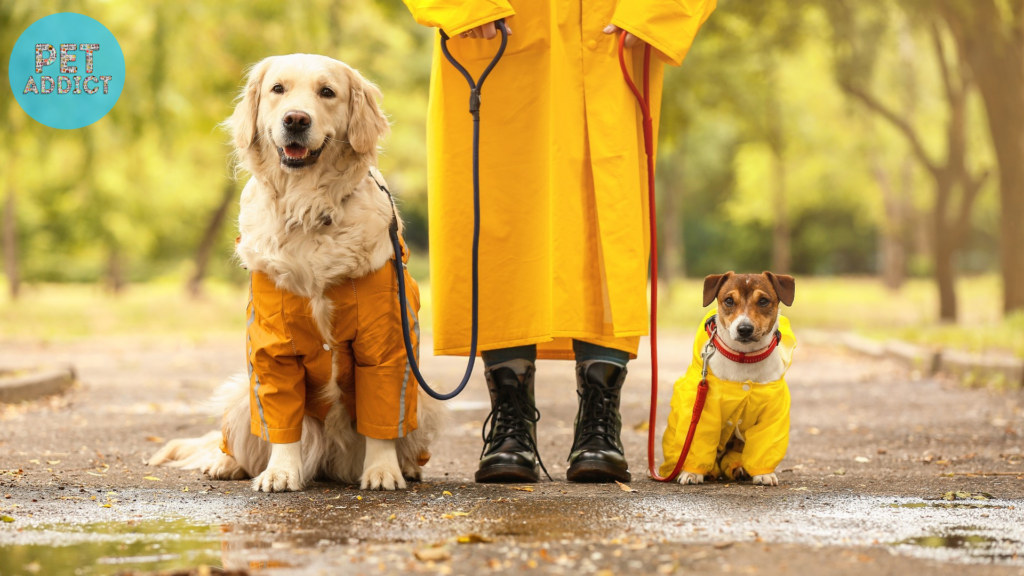
To ensure maximum comfort and effectiveness, it’s important to choose the right dog raincoat for your furry friend. Consider the following factors when making your selection:
- Assess Your Dog’s Size and Breed: Dog raincoats come in different sizes to accommodate various breeds and body shapes. Measure your dog’s neck, chest, and length to find the appropriate size. Some manufacturers provide breed-specific sizing charts to guide you.
- Consider Climate and Weather Conditions: Take into account the typical weather conditions in your area. If you live in an area with heavy rainfall, opt for a raincoat with excellent waterproof properties. In milder climates, a water-resistant raincoat may be sufficient.
- Key Features to Look For: Look for raincoats made from high-quality, waterproof materials such as nylon or polyester. These materials provide optimal protection against rain. Adjustable fittings, such as straps or Velcro closures, allow for a snug fit. Reflective strips or patterns on the raincoat can enhance visibility during low-light conditions.
How to Measure Your Dog for a Raincoat

Measuring your dog accurately is crucial to ensure the raincoat fits properly and allows freedom of movement. Follow these steps for accurate measurements:
- Measure the Neck: Wrap a measuring tape around the base of your dog’s neck, where the collar usually sits. Make sure to leave enough space for comfort and ease of movement.
- Measure the Chest: Measure the circumference of the widest part of your dog’s chest, typically just behind the front legs. Keep the measuring tape snug but not too tight.
- Measure the Length: Measure the distance from the base of the neck to the base of the tail. This will give you the length of the raincoat needed to cover your dog’s back.
Remember to consult the specific sizing instructions provided by the manufacturer of the raincoat you intend to purchase. If your measurements fall between sizes, it’s generally recommended to choose the larger size for a more comfortable fit.
Putting on and Adjusting the Raincoat

Putting on a dog raincoat properly is essential for your dog’s comfort and the raincoat’s functionality. Follow these steps to ensure a proper fit:
- Orient the Raincoat: Identify the front and back of the raincoat. Most raincoats have a label indicating which side is the front.
- Guide Your Dog’s Head Through Gently guide your dog’s head through the designated opening. Ensure that the raincoat covers their back and rests comfortably on their shoulders.
- Fasten the Straps or Closures: Depending on the design, fasten the straps, buttons, or Velcro closures to secure the raincoat. Adjust the fittings to ensure a snug but not tight fit. Avoid fastening the raincoat too tightly, as it may restrict your dog’s movement or cause discomfort.
- Check the Coverage: Confirm that the raincoat covers your dog’s back and extends to the base of their tail. The raincoat should provide ample coverage without obstructing their movement or causing any discomfort.
Maintaining and Cleaning Dog Raincoats
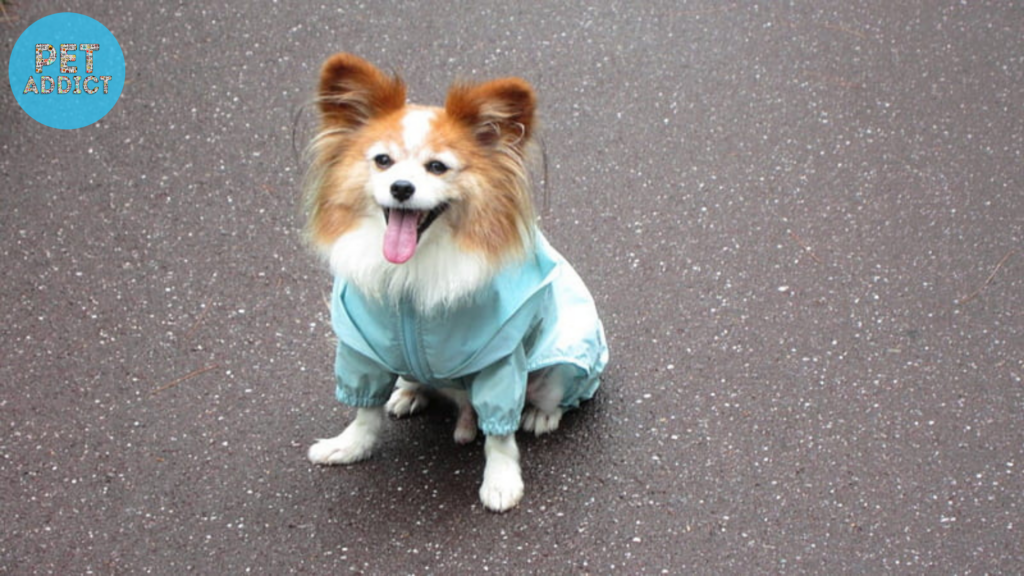
To maintain the waterproof properties of your dog’s raincoat and prolong its lifespan, regular cleaning and proper storage are essential. Follow these tips:
- Regular Cleaning: Follow the manufacturer’s instructions for cleaning the raincoat. Most raincoats can be hand-washed or machine-washed on a gentle cycle. Use mild detergent and cold water to preserve the fabric and waterproof coating. Avoid using bleach or harsh chemicals that may damage the raincoat.
- Drying: After washing, allow the raincoat to air dry thoroughly. Avoid using a clothes dryer or direct heat sources, as they may cause damage. Hang the raincoat in a well-ventilated area until completely dry.
- Storage: Once the raincoat is dry, store it in a clean, dry place. Avoid folding the raincoat tightly, as this may crease or damage the material. Consider using a garment bag or hanging the raincoat on a hook to maintain its shape.
Regularly inspect the raincoat for any signs of wear or damage. If you notice any tears or compromised waterproofing, consider replacing the raincoat to ensure optimal protection for your dog.
Additional Rainy Day Essentials for Dogs
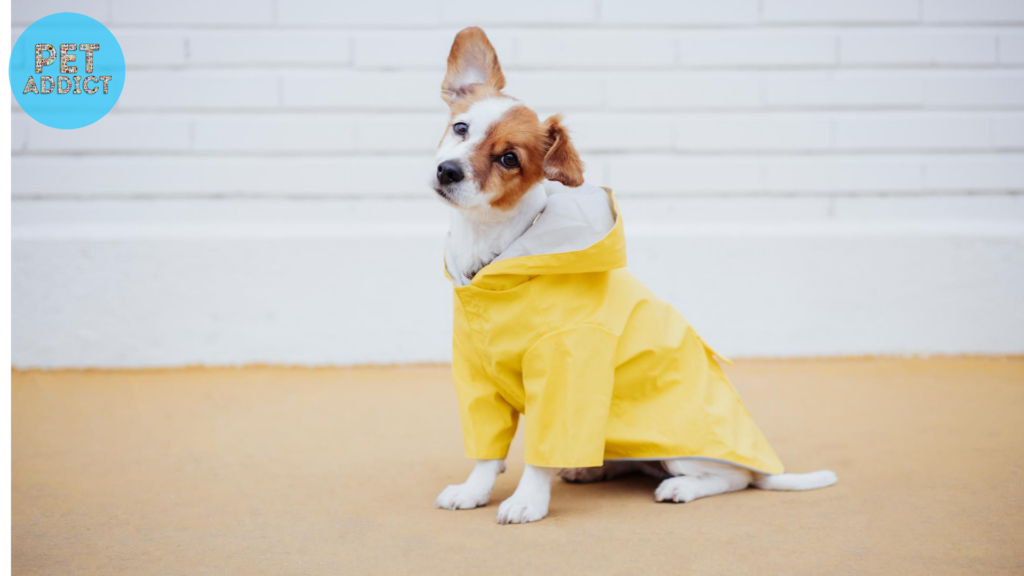
In addition to a dog raincoat, there are other rainy-day essentials that can enhance your dog’s comfort and protection:
- Dog Boots: Dog boots provide protection against wet and muddy conditions, keeping your dog’s paws clean and dry. They also offer added traction and prevent your dog from slipping on wet surfaces.
- Umbrellas: Dog-specific umbrellas with attached leashes are available in the market. These umbrellas provide a shield against rain while allowing you to walk your dog comfortably.
Frequently Asked Questions (FAQs)
FAQ 1: Can I leave the raincoat on my dog all day?
While it’s generally safe for dogs to wear raincoats for extended periods, it’s important to monitor your dog’s comfort and well-being. If your dog shows signs of discomfort or if the raincoat becomes wet or dirty, it’s best to remove it.
FAQ 2: Are dog raincoats suitable for all breeds?
Yes, dog raincoats are suitable for dogs of all breeds. However, it’s crucial to choose the right size and style that fits your dog’s specific needs and body shape.
FAQ 3: Can I use a human raincoat for my dog?
Human raincoats are generally not recommended for dogs as they may not provide a proper fit and coverage. Dog raincoats are designed with the unique shape and needs of dogs in mind, ensuring maximum comfort and protection.
FAQ 4: How do I introduce my dog to wearing a raincoat?
Introduce the raincoat to your dog gradually and in a positive manner. Start by allowing your dog to sniff and explore the raincoat. Reward them with treats and praise when they show curiosity or interact with the raincoat. Gradually progress to put the raincoat on for short periods, gradually increasing the duration.
FAQ 5: What if my dog refuses to wear a raincoat?
If your dog is resistant to wearing a raincoat, be patient and try different approaches. Introduce the raincoat gradually, using positive reinforcement and treats. You can also try desensitization techniques, such as associating the raincoat with enjoyable activities or using a familiar and comfortable scent on the raincoat.
In conclusion, dog raincoats are a practical and effective solution for protecting your furry friend from rain and wet weather conditions. By understanding the different types of raincoats, measuring your dog accurately, and maintaining the raincoat properly, you can ensure your dog stays dry and comfortable during outdoor activities. Don’t forget to consider additional rainy day essentials such as boots and umbrellas for complete protection. Enjoy your walks with your dog, rain or shine!


